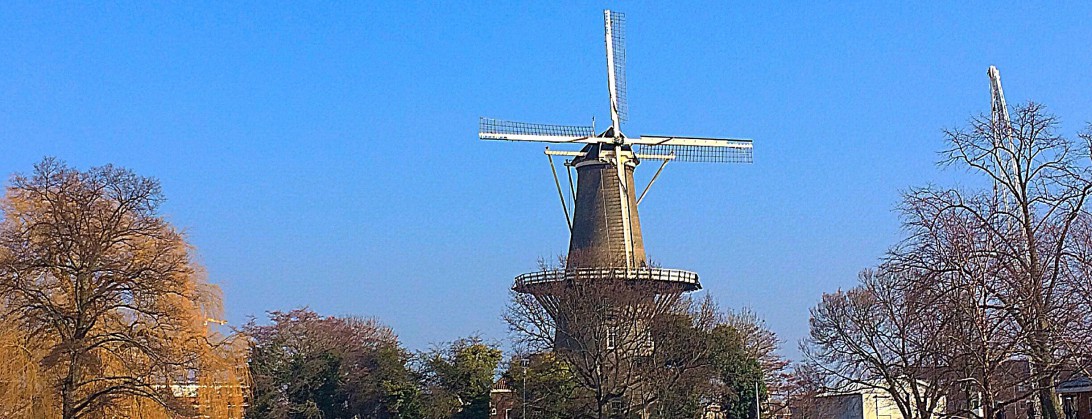Admitted, Steve Jobs has been an inspiration for me during a larger part of my life. I remember vividly the excitement before the Apple presentations after the man’s return to Apple in 1997 as ‘iCEO’. A wiser man, knowing how to avoid the mistakes during his first time at Apple but still driven in every aspect to make ‘a dent in the universe’ as he would like to say himself.
In 2010 it became obvious that Steve Jobs was starting to lose his battle with his life threatening disease, but his passing in October 2011 was still a shock for many and one deeply felt in the world of technology and beyond. Steve Jobs was not only the most successful entrepreneur in the world of IT technology, in the years before his passing he was at the top of his game with his guidance of revolutionary products like the iPhone and iPad and new ways of distribution and sales of software (iTunes and AppStore).
Because of these circumstances it is understandable that the world saw after October 2011 a stream of products, most noticeable books, documentaries and movies to understand and memorise this remarkable person and sparkling personality. One of the high lights of these events was supposed to be the movie ‘Steve Jobs‘ directed by Danny Boyle (Trainspotting, Slumdog Millionaire) and distributed by Sony Universalis.
From the very few things I read before I went to the theatre myself, I was under the impression that the movie got very warm reception on an artistic level, but the movie was highly unsuccessful on a commercial level in the US. This is usually a sign that such a movie is doing even worse in the Netherlands, but to my surprise the theatre was sold out at a rather irregular time (17.00 at the evening of Sinterklaas, one of the most popular times for families to gather).
The movie evolves around 3 decisive moments in the career of Steve Jobs: the 1984 launch of the original Macintosh, the 1988 launch of the Next computer and finally the launch of the iMac in 1998. This means that a visitor who is not really that well acquainted with the life and works of Steve Jobs almost certainly will not get a clear picture of the timeline of Job’s career and how the events should be viewed in context of Job’s career: the histoircal events literally come flashing by in seconds.
Instead the movie focuses on the emotional clashes with a few important people in his life. First there is his former girlfriend that had a child from Steve Jobs, Christa Brennan and their daughter Lisa. Christa is being portrayed as the cranky type , always in pursue of Job’s money, while Jobs stubbornly insists that he might not be the father of the child. There are some vague indications that his behaviour is related to the fact that Jobs himself was an adopted child. The evolving relationship between Jobs and his daughter is clearly one of the more interesting aspects of the movie, especially when Jobs in one of the final scenes admits that the LiSA computer, which he worked on after she was born, was named after her and was not an acronym for ‘Local Integrated System Architecture’.
Then there is Steve Wozniak, ‘The Woz’ was Job’s partner from their start with ‘Apple’ asa company. Wozniak is n the movie recognised as a genius for the development of the Apple I and Apple II computer. Yet already in 1984 (!) he also is irritating Jobs as he want the Apple II team to be mentioned in the 1984 Macintosh presentation, where the Macintosh represents the future of the company (of course under the guidance of Steve Jobs) and the Apple II the past under guidance of Wozniak, although still Apple’s moneymaker at the time. But it even gets worse during the movie, because Wozniak is still around in 1998 before the iMac presentation with the same request for Jobs (to mention some of the original team Apple II members in his keynote). This is not only completely unbelievable, but also becomes a somewhat boring aspect of the movie: all the same people in Job’s life suddenly showing up minutes before the keynote starts.
The interaction with John Sculley (performed by Jeff Daniels), the CEO from Pepsi who Jobs invited to come and work for Apple is the most interesting of these encounters, although has very little to do with actual events that happened. It can also be confusing for the visitor who is less informed about the relationship between the two, especially when the are discussion about whether Jobs was actually fired or stepped down as Apple’s boss on his own initiative in 1985. Also is Sculley repeatedly nagging about the ‘skinheads’ that were in the famous Macintosh Superbowl ad from 1984 and there are some confusing discussions if Apple’s board wanted to cancel the airing of the advertisement.
This brings me to the main mood and weak point of the movie. By the time we are in 1998 there are still the same people showing up with their same -already mentioned and therefore boring- arguments, there are only few twists to keep the story interesting and going. As mentioned all these events take place minutes before Job’s presentations. Knowing the perfectionist Steve Jobs it is impossible that he would even have these events happen right before a presentation. If you can set aside all these non-historical events and are more interested in the emotional aspects and developments of Job’s whimsical character this movie might be for you. On the other hand if you want to get a better understanding how Steve Jobs turned Apple into the largest and most successful company in the world, I recommend that you watch another recent movie about Steve Jobs: the 2013 movie with Aston Kutcher (‘Jobs‘).
-Den Haag, December 10th 2015-
